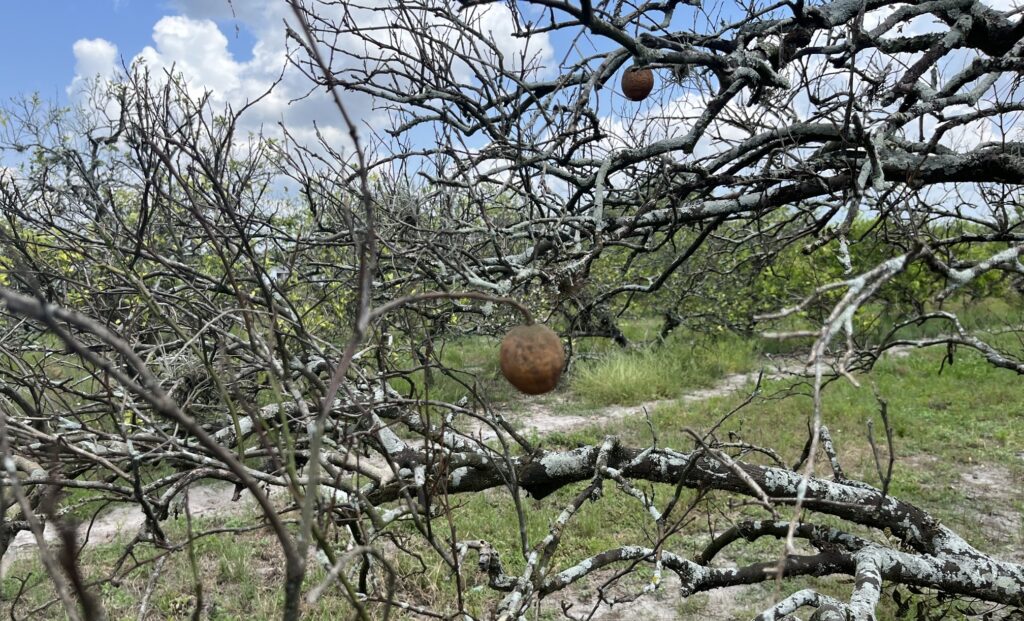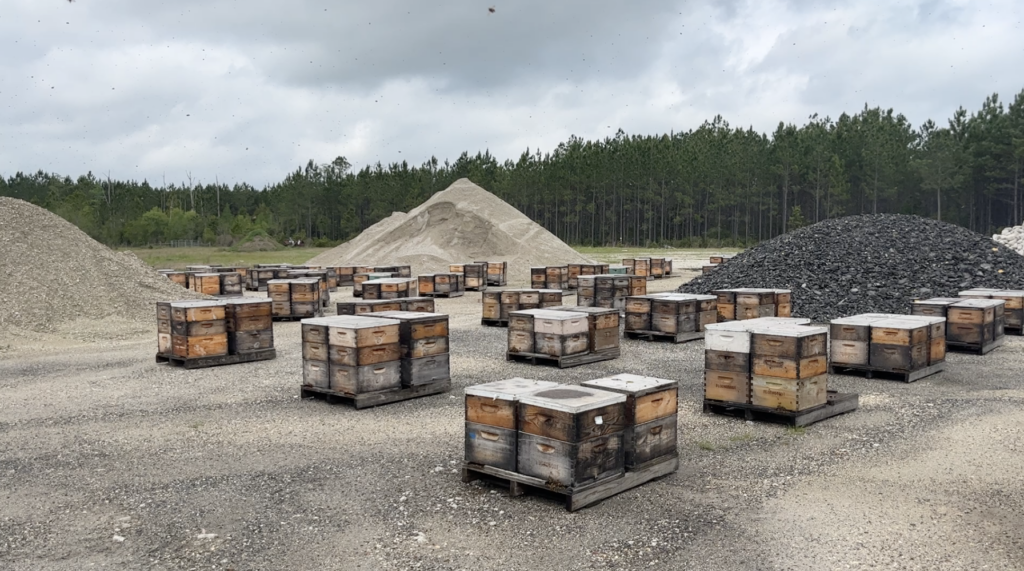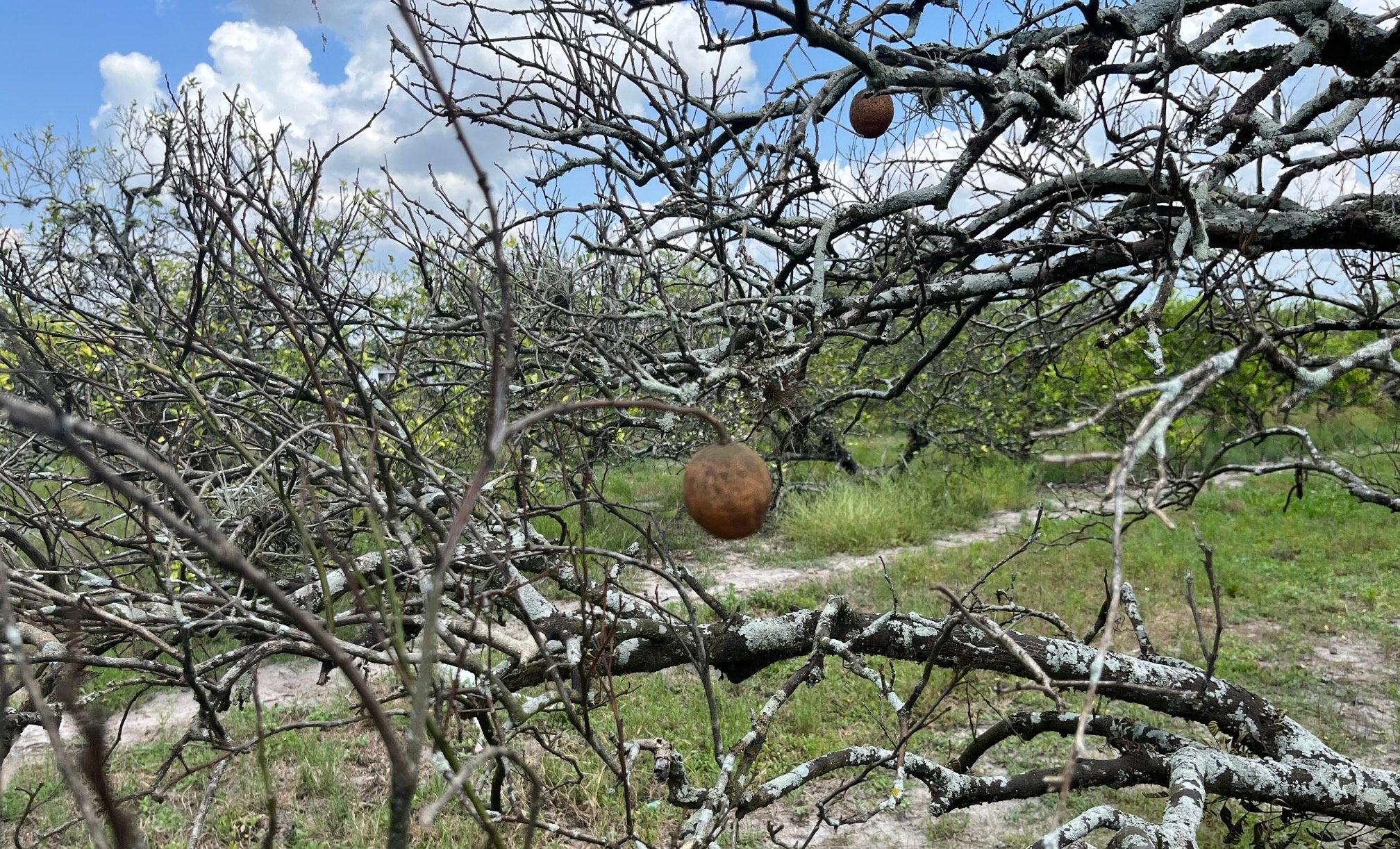This spring, our co-founders Eric and Laura traveled with our bee guide, Todd, down to Florida to meet with our producer partners in the area to source a new crop of Florida Orange Blossom Honey (check out their trip in our Bee Safari video series here).
Unfortunately, sourcing Florida Orange Blossom Honey this year proved more difficult than anticipated due to something called Citrus Greening:
Citrus Greening, according to the USDA, is one of the most serious citrus plant diseases in the world, devastating millions of acres of citrus crops.
It is caused by a pathogen spread by insects, with no known cure. Infected trees produce bitter, inedible fruit, and die within a few years. Today, a reported 80% of orange trees in Florida are now affected, according to Florida Department of Citrus. While the disease itself does not infect honey bees, the results have been catastrophic for the citrus industry and for the bees and beekeepers who provide their pollination services.
We met with the producers of our Florida Orange Blossom Raw Honey to learn more about the impact on beekeepers and their hives.

Citrus Greening is also known as Huanglongbing (Yellow Dragon Disease), or HLB for short. It is spread by small mosquito-sized insects known as Asian citrus psyllids, and has put the American citrus industry at risk. The first U.S. cases of the disease were confirmed in Miami in 2005, and spread across the state in a few short seasons. Today, according to the Florida Department of Citrus, over 80% of orange trees in Florida are now affected. The disease is also present in California, Georgia, Louisiana, Puerto Rico, South Carolina, Texas, and the U.S. Virgin Islands (USDA).

As our team travelled around the state meeting with our honey producers, we realized just how big of an impact citrus greening was having on the honey industry. Pollination services have been a growing industry for beekeepers, now exceeding honey as a source of beekeeper revenue due to the decline in wild bee population in recent decades (another blog for another time). Beekeepers take their hives into the citrus groves – or apple orchards, or almond orchards, etc. – during the blossom season. Once relocated, the bees will collect pollen and nectar, pollinate the trees, and produce lots of delicious honey. It’s a win-win.
This has become a challenge in the past couple of years, however, as citrus groves need to work hard and swiftly to combat the first sign citrus greening, which includes the use of pesticides to combat the psyllids. It’s difficult timing for the beekeepers to deliver their hives, or remove them on short notice, to avoid subjecting the bees to these pesticides, making a successful orange blossom harvest increasingly difficult.

One of the ways that beekeepers have been managing this is to establish strong relationships with the farms. They rely on working closely with small farmers whom they remain in frequent communication with. That way, if the citrus groves do need to be treated, the farmers can call the beekeepers who come to collect the bees right away. At the end of the day, both the farmers and beekeepers are doing their best to make do with a very difficult situation.
Read more about Citrus Greening and the impact on Florida and beyond from the Florida Department of Citrus and the USDA.

